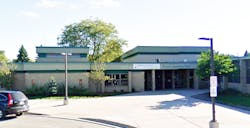Ann Arbor district outlines plans for building upgrades covered in its $1 billion bond issue
The Ann Arbor (Mich.) School District has unveiled a draft plan for how its $1 billion in bonds will be spent over the next 10 years and beyond.
The Ann Arbor News reports that the school board is working on a tentative timeline of when renovations will take place throughout the district’s 35 buildings. "It is the first chapter of about a 30-year endeavor," Ann Arbor Superintendent Jeanice Swift says.
The $1 billion bond issue approved by voters in November 2019 will enable the district to renew and replace existing school infrastructure, make upgrades at every school, build new classroom space to accommodate growing student enrollment and purchase buses and technology.
With the highest level of improvements needed at the elementary level, the plan begins with major projects at elementary schools, followed by the district's high schools and concludes with the middle schools.
Major construction plans will begin in the southeast portion of the district, with the construction of a new Mitchell Elementary on the existing site, says Emile Lauzzana, the district’s executive director of physical properties.
The district's five middle schools will undergo significant renovations between 2021 and 2028. The work will involve upgrades of elements such as air conditioning, lighting, roofing, solar installation and fire suppression, Lauzzana says.
Construction will begin in high school buildings with the installation of air conditioning at Community High School in 2021, as well as lighting and fire suppression improvements.
Pioneer and Huron high schools are scheduled for smaller scale improvements such as lighting, roofing and paving over the next three years. The district will spend 2021 studying operations at the Balas Administration Building to maximize efficiency and prepare the office for a "post-Covid" environment that is also more accessible to the public, Lauzzana says.
"We've all been working remote in our basements and living rooms for almost a year," he says. "That office work and life is going to be different post-Covid than it is now. We really want to take this time to study how our central office operates."
About the Author
Mike Kennedy
Senior Editor
Mike Kennedy, senior editor, has written for AS&U on a wide range of educational issues since 1999.
